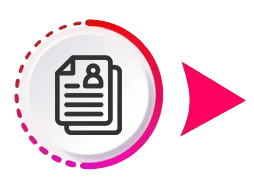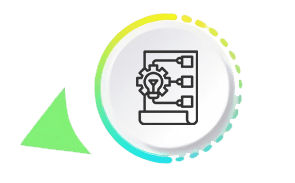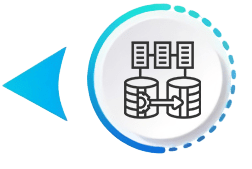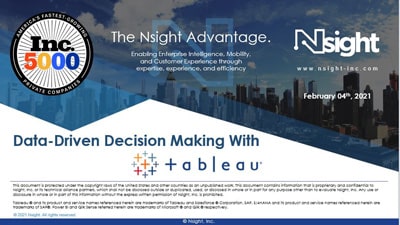Unleash the Power of Data with Nsight’s Data Integration Services
Businesses must get their data together from different silos to get real-time, unified, and intelligent data insights. Nsight helps you boost data-driven efficiency and performance to get your business to the next level. With our data integration service, you can transform data into an asset for your business.



Let’s Create a Data-Rich Ecosystem for your Business
Why consider Nsight for Data Integration Services?
Our data integration services help you get a holistic view of data across your business. You can integrate disparate data sources to chart your business success for a predictable trend. With Nsight, understand your current business performance and identify future growth opportunities.

Expertise in Multiple Technology Stacks
Expertise in Multiple Technology Stacks Our team is proficient in leading data integration implementations. We can help you with end-to-end integration services, so you get the best from their data. We also provide data preparation, cleaning, integration, and migration services to set up a data warehouse or data lake as per your business needs.
Seamless Transformation
Seamless Transformation When you move away from data silos to a unified data-driven business, we ensure that we nurture the people and culture in your organization to adopt that shift seamlessly and unequivocally. 
High Performing Team
High Performing Team
We are a team of high-performing people experienced across multiple industries and disciplines to deliver as per your unique needs. 
24X7 Support
24X7 Support
Our round-the-clock support ensures maximum uptime, quick issue resolution, and uninterrupted services.
Client-Focused
Client-Focused
Our team strives to understand your specific challenges and does not recommend a one-size-fits-all approach. We tailor a technology solution that adds value to your business.How can Nsight help Clients Seeking Data Integration Services?
As businesses grow, the IT architecture becomes more complex and demanding. Additionally, there is an added burden to manage data efficiently and the growing need for different systems to communicate with each other. We recommend a next-gen data integration solution so that organizations can transform data into a growth driver.

Data Integration
Services

Consulting
Consulting
We suggest the best tools and technologies for data integration and help you with system sizing and architecture advisory.

Data Profiling and Processing
Data Profiling and Processing
Our team checks data integrity and quality and recommends processes to enrich data. We employ multiple tools to enhance the data quality for completeness, reliability, and consistency and ensure that it’s up to date

Performance Tuning
Performance Tuning
Our team refines the Extract, Transform, Load (ETL) script to aid perform different operations on large volumes of data.

Implementation
Implementation
Our team integrates data across multiple data sources considering all complex data rules specific to a business. We are experts in setting up the data warehouse and data lakes with the right technology.

Migration
Migration
Every business has unique requirements, and we help you migrate data across multiple technology platforms to meet the requirements of your business.

Support
Support
Our dedicated team provides 24X7 support to maintain the existing ETL script and make any changes to support the varying needs of an organization.

Consulting
We suggest the best tools and technologies for data integration and help you with system sizing and architecture advisory.

Implementation
Our team integrates data across multiple data sources considering all complex data rules specific to a business. We are experts in setting up the data warehouse and data lakes with the right technology.

Data Profiling and Processing
Our team checks data integrity and quality and recommends processes to enrich data. We employ multiple tools to enhance the data quality for completeness, reliability, and consistency and ensure that it’s up to date

Migration
Every business has unique requirements, and we help you migrate data across multiple technology platforms to meet the requirements of your business.

Performance Tuning
Our team refines the Extract, Transform, Load (ETL) script to aid perform different operations on large volumes of data.

Support
Our dedicated team provides 24X7 support to maintain the existing ETL script and make any changes to support the varying needs of an organization.
Integrate Data from Various Sources and Applications Seamlessly


Why do you Need Data Integration Services?
IT teams must juggle multiple challenges related to network, firewall, data storage, backup, and maintaining servers. Additionally, the changing market requirements add a burden to the IT infrastructure, and it must evolve to adapt quickly to the changing needs.
Connect Data Across your Enterprise
Connect disparate applications, data warehouses, and systems in real-time for a unified data view to make critical decisions.
Enhanced Customer Insights
Consolidate customer data from multiple touchpoints for a 360-degree understanding and insight into customer behavior and preferences.
Enhanced Growth Opportunities
Manage large volumes of data efficiently and quickly for a deeper understanding of business performance and maximize growth opportunities.
Increased Collaboration
With enhanced data synchronization and transparency, make your internal teams more collaborative without the need to re-engineer your IT systems.
Frequently Asked Questions (FAQs)
Data integration consolidates data from different sources and stores it in a single location for a unified data view.
Some of the data integration tools are:
Open-source tools (flexible tools that provide complete control over data). Cloud-based tools (set of automated tools that enable different Software and data). On-premises tools (used to build and maintain data integration on-site).
The key types of data integration are data consolidation (includes considering data from multiple sources, getting rid of redundancies, cleaning errors, and consolidating data), data virtualization (getting data together in a virtual data layer), and data replication (copying and pasting data subsets from one system to another).
You need to consider several data sources to be integrated, data formats (structured, unstructured, semi-structured, or a combination), and available resources (available resources in terms of people, skills, and knowledge available internally to use the tools).
There are five different methods to integrate data, each with its pros and cons. These methods are manual data integration, middleware, application-based, uniform data access, and standard storage integration.
To achieve the best results, you need to find a trusted data integration partner. The partner must understand your business objectives and have a skillful team of developers, data engineers, and other specialists to manage the project effectively. They should have the capability to meet your future demands.











